An important point in the arrangement of housing is grounding in a private house with your own hands 220v. This is a special device that guarantees safety when using electrical appliances, and also serves as protection against short circuits. The need for grounding arises when supplying electricity to a residential building. This equipment can be installed by hand. Special recommendations will help to do this qualitatively and inexpensively. Grounding can be performed for two different networks - 220 and 380 V. In this case, for the second option, it is necessary to perform a special circuit.
Organization of home protection
Grounding in a private house can be done by hand. This method will allow you to remove stray currents and prevent the accumulation of static electricity on electrical equipment.

Installation diagram to the ground terminal in the shield
Related article:
With a minimum knowledge of electrical work and with the help of our guide, you will be able to independently carry out the wiring in your home.
The circuit protects residents from electric shock. When the zero phase is interrupted, the body of electrical equipment is a great danger. For such cases, a ground loop is provided, which is a phase through which electricity goes into the ground.
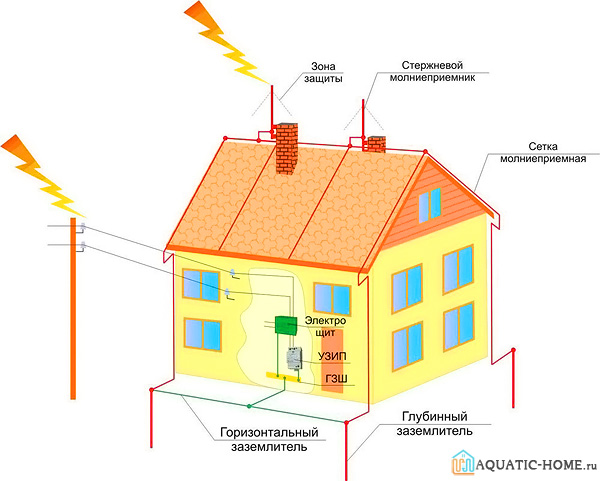
Helpful information! The device helps to reduce the risk of fires, overloads, and also increases safety when working with various equipment.
Device and principle of operation
The ground loop is a device of two subsystems: internal and external. The two lines are connected in a switchboard. The second part is placed on the street and consists of electrodes, which are connected by metal plates and dug into the ground.

A metal bus is drawn from such a device, which is connected to the main shield. The principle of operation of the structure is such that when a person contacts electrical equipment, the current rushes into the soil not through the body, but through a special conductor. At the same time, you can make different types of grounding in a private house with your own hands. 380v requires a slightly different approach.
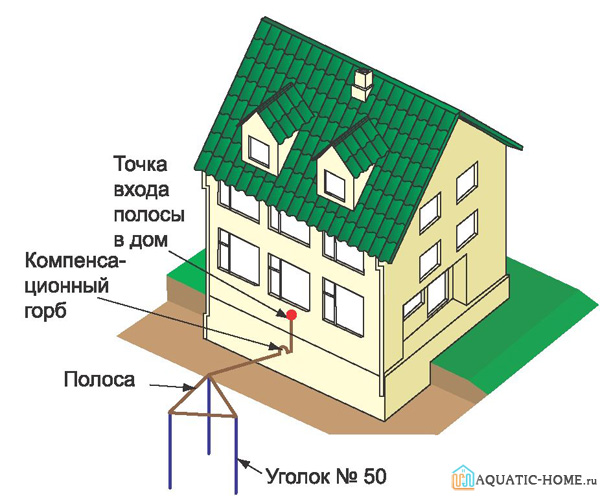
Home security device
In humans, the resistance index is 1 kOhm, and in the mechanism - 4 Ohms. Electric current takes the fastest and easiest path to ground, which has the lowest resistance.
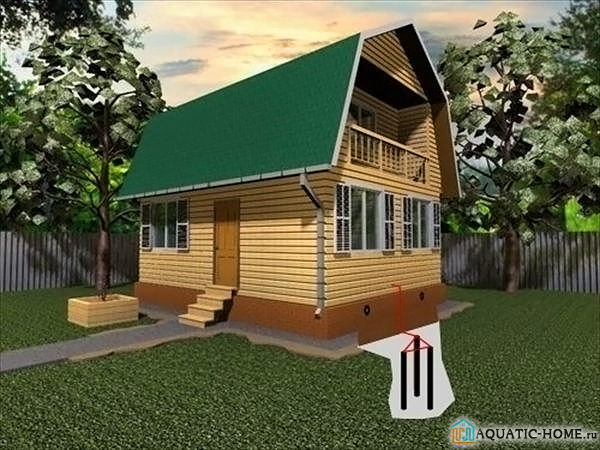
The grounding device includes:
- A grounding conductor is an element that comes into contact with the ground and produces the descent and distribution of current. In private buildings, natural types of devices are used from a steel pipeline, a protective coating of a power cable and a reinforced concrete part of a foundation or column.
- The grounding conductor is a part that connects the electrical installation and the grounding conductor.
Three elements of the vertical type are used, as well as three horizontal stripes that connect the vertical elements. The steel strip is used as a conductor between the switchboard and the ground loop.
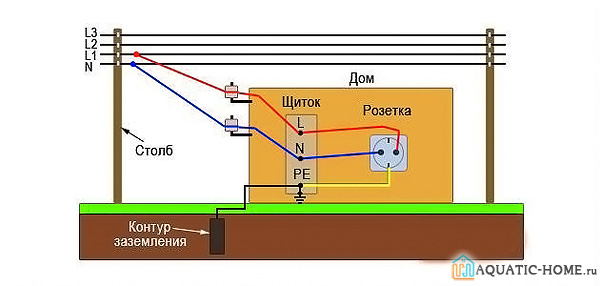
During installation, two schemes are used:
- A closed circuit is made in the form of a triangle.
- Linear is performed from series-connected jumpers.
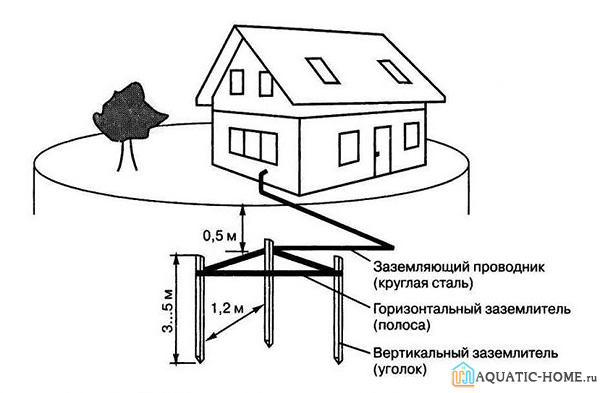
The contour in the form of an isosceles triangle is popular. It is located at a distance of several meters from the foundation of the building. At the same time, a trench is dug into which steel elements are driven in. Then a strip of steel is mounted around the perimeter.
Helpful information! In a private house, it is better to use a triangle scheme. Because it is more efficient.
How to organize grounding in a private house with your own hands 220v?
If you do grounding in a private house with your own hands: 380v or 220v options are performed in several stages:
- A hole is created next to the building, which is dug with a shovel.

- A metal corner is mounted at the bottom of the trench.

- A stranded profile is attached to the structure and connected to the shield.
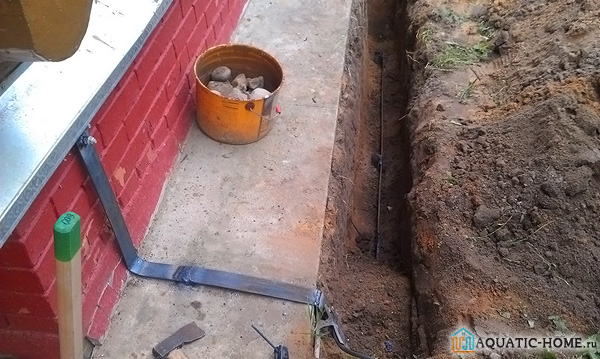
To create the maximum effect, a certain metallic bond is created. 3-4 corners are welded using a strip of a certain width. In addition to the main process, the following important conditions are met:
- Potential indicators are aligned.
- The voltage drops.
- A device for automatic shutdown is mounted.
- Double insulated wires are used.
- Isolating transformers are used.
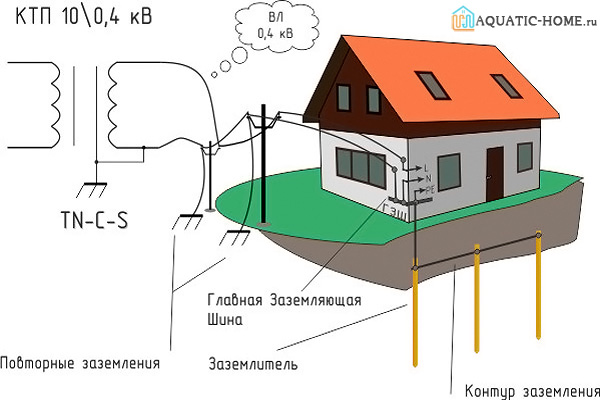
Grounding requirements: 220 and 380v
An important parameter during installation is the spreading resistance. This value determines the speed with which the current will overcome the distance to the ground from the surface of the electrical device.
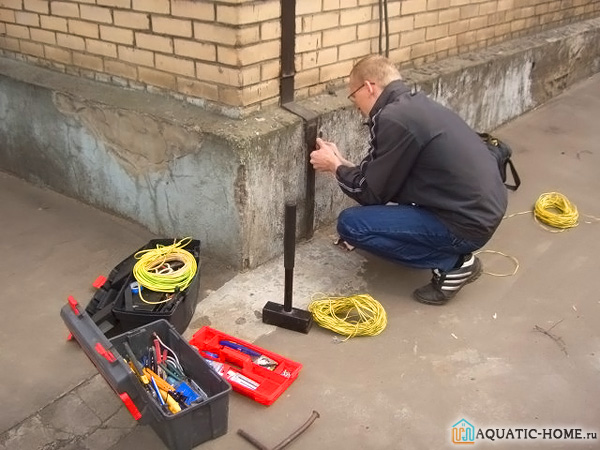
The grounding process requires certain conditions to be met:
- The length of the vertical parts must be at least 16 mm.
- Horizontal - 10 mm.
- The thickness of the metal is at least 4 mm.
- The minimum section for pipes is 32 mm.
Helpful information! In the electrical panel, the circuit is connected to a special bus, which is coated with a special lubricant and polished to a shine.
Mounting Features
It is important to choose the right place to install the device. In this place, the presence of a person or animal should be excluded, as this can lead to death.
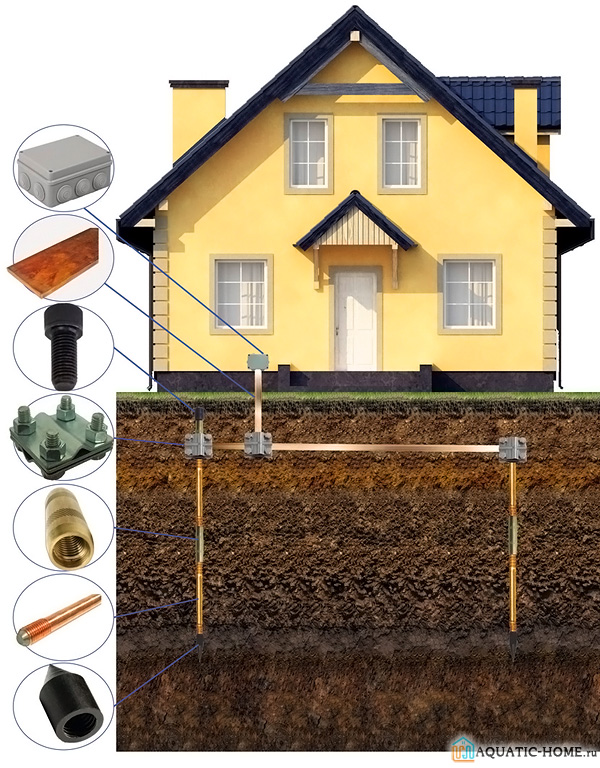
This area must be carefully fenced off, or covered with some kind of boulder or sculpture. Special rules must be taken into account when doing grounding in a private house with your own hands 220v. The scheme involves the use of ground electrodes, which are driven to a depth of about three meters.
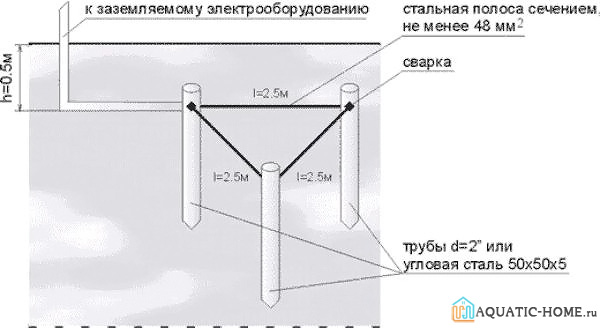
Then the rods are cut 15-20 cm below ground level. Channels are made between them, where connecting elements are laid. Welding is used for fastening. Circuits 220v and 380v differ in different resistance values.
Grounding and lightning rod
Lightning arrester and grounding are two different things. Do-it-yourself grounding in a private house 380v or 220v is aimed at diverting excess electricity to the ground. A lightning rod diverts the electrical atmospheric charge to the ground and only works when lightning strikes.

What is forbidden to do when grounding?
When performing grounding, you should not do the following things:
- You should not mount only one metal rod. For high-quality grounding, one or even two triangles are required.
- Do not use elements with a high density: channel or reinforcement. Due to the durable surface, they will have less contact with the ground.
- Do not install to a depth of less than 1 meter.
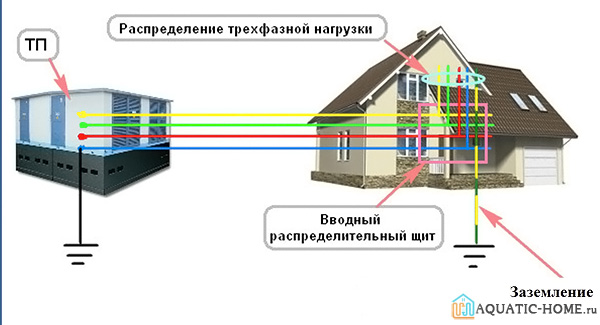
Helpful advice! Before digging metal parts into the ground, they must be treated with special protective coatings.
Differences in grounding and grounding
Do-it-yourself grounding in a private house 380v is very different from grounding, the scheme of which involves use in other conditions. Zeroing is often used in manufacturing plants. Zeroing can only protect against short circuits and does not drain excess electricity. In domestic conditions, such a function is useless. It can even lead to burnout of electrical appliances.
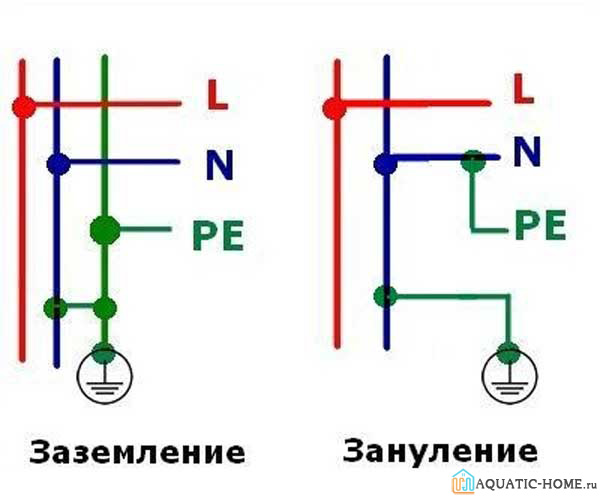
Helpful information! When installing a zeroing device, it is worth using a mechanism to turn off the equipment or a voltage limiter.
Which grounding kit to choose: prices and manufacturers
Ready-made kits are available for installation of the protective circuit in domestic and industrial environments. The following manufacturers are worth considering:
- Galmar is considered a popular manufacturer. The device is designed for installation to a depth of about 30 m. Such a device costs about 40 thousand rubles.
- Domestic manufacturers include products "VOLT-SPB". Installation depth can be from 6 to 30 meters. The cost is from 6 to 26 thousand rubles.
- Zandz devices are considered universal devices. They are mounted to a depth of 10 m.
- Ezetec kits are considered inexpensive. They can cost about 7 thousand rubles.
- Elmast kits are made of stainless steel. They can cost about 7 thousand rubles.

Test work for performance
After the installation work is completed, a mandatory check is carried out. To do this, a light bulb is connected to one end of the circuit. The contour is made correctly if it shines brightly. Also, the performance is checked using a factory device - a multimeter.
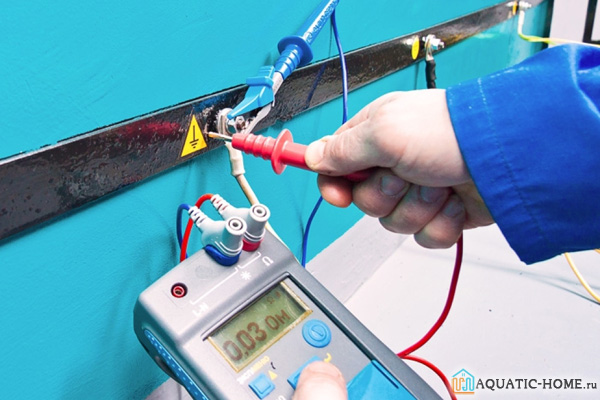
Article



